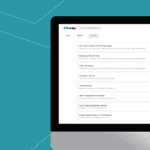
How to Manage Payroll as a Small Business Owner

How to Set up Time and Attendance
What a customer success officer is to a business’s clients is what an HR Manager is to a business’s employees. Your organisation has to consistently be in a position where employees will choose to work for your organisation, especially since the days employees have begun to critically examine what they have to gain or lose working for any employer; if spending their skills on your business is worth it or not.
Employee expectations starting point – Recruitment
Seeing that business owners want their employees to be efficient as they help build their businesses to become highly successful, what can they do about these expectations when they arise? This changing world of work especially does not help matters. What about situations where employee expectations do not align with business goals or your organisation is not yet poised or equipped to handle such expectations?
Employee expectations usually begin from the recruitment stage. Prospective employees already have what they expect your organisation to provide them with and attend interviews with this mindset.
It is important to understand that, as much as you would like to make your workplace as conducive and healthy as possible, what some employees expect cannot be offered by your business. This is either because of certain business goals and objectives or because your business is not just in the position to meet such expectations. This usually happens when an employee wants to grow horizontally, to a similar field of experience, but within your organisation, such services cannot be offered.
What employees expect in the workplace
Expectations employees usually share differ according to age and the generation they belong to. For instance;
Baby boomers
Equate self-worth with position and ranking, so, they would expect a competitive environment. They may have difficulty adjusting to flexible workplace practices, so working remotely may not resonate well with them.
Millennials
Those who desire a work-life balance will most likely be looking out for flexible roles that allow them enough time to manage their personal lives and occupation effectively. Hence, they may expect to be offered remote or hybrid employment. Such expectations are, fortunately, rampant in the workplace today.
Gen Zers
The very controversial generation of workers, the Gen Zers, expect to have a community of like-minded people, and they value work-life balance and mental health above income and brand reputation. They usually juggle multiple jobs at a time, so they expect a great level of flexibility. As a business owner, it can be a daunting task to manage all these expectations.
Managing Employee Expectations
Here are a few ways you can manage them and support all your employees according to their expectations.
1. Autonomy – Trust your employees
This is simply giving employees the freedom to express their creativity and skills in tasks assigned to them. It is trusting them to get the job done! When you allow this level of freedom at your workplace, employees find better ways to do things, they own their work and will hesitate to produce results that affect their reputation as professionals.
Micromanaged employees are usually reluctant to take initiative and find more effective ways of doing things. They eventually move on to find places that make them feel intelligent and relevant. Employees do not want to be treated like robots. In situations when an employee is underperforming, host periodic performance reviews so employees can express their views and problems. Click on the link to learn more about steps to improving employee productivity at work.
2. Make flexibility really flexible
Not every employee will prefer to work in the office and certainly not every employee will be interested in working remotely. Oftentimes, employers believe they support flexibility by asking all their employees to make a certain move that is seemingly flexible. Allow employees to decide what environment works best for them to be productive. Support a hybrid culture and empower employees to make decisions that foster their productivity.
3. Support growth and professional development
What kind of employee would prefer to not get an increase in their paycheck periodically? Employees like to get those emails and papers that inform them that a certain percentage has been added to their previous salary. This can only happen when an employee consistently yields value to the organisation. However, bringing in value does not just happen, it comes from personal development.
Thus, employers should organise training that is relevant to their employees’ professional development or even send them to training organised by professional bodies. Also, employers can allot a certain amount of days annually as leave/time off for professional development for employees.
Read more on prioritizing professional development and internal mobility in the employee lifecycle here.
4. Conduct periodic performance reviews
Performance reviews are mutually beneficial to both employees and employers. This is because both parties are free to express their observations and opinion concerning work and culture. The result is often positive and allows for clean air in the workplace. Properly conducted performance reviews ease tension and provide constructive feedback for each party to work with to foster growth and optimise business processes that eventually help to achieve business goals. Learn more about conducting effective performance reviews.
Conclusion
Finally, understanding your employee population is paramount in managing their expectations. This is achievable with properly evaluated psychographic profiling. This will help to understand their expectations as a group of people and also as individuals in the workplace so as to work with them accordingly.
